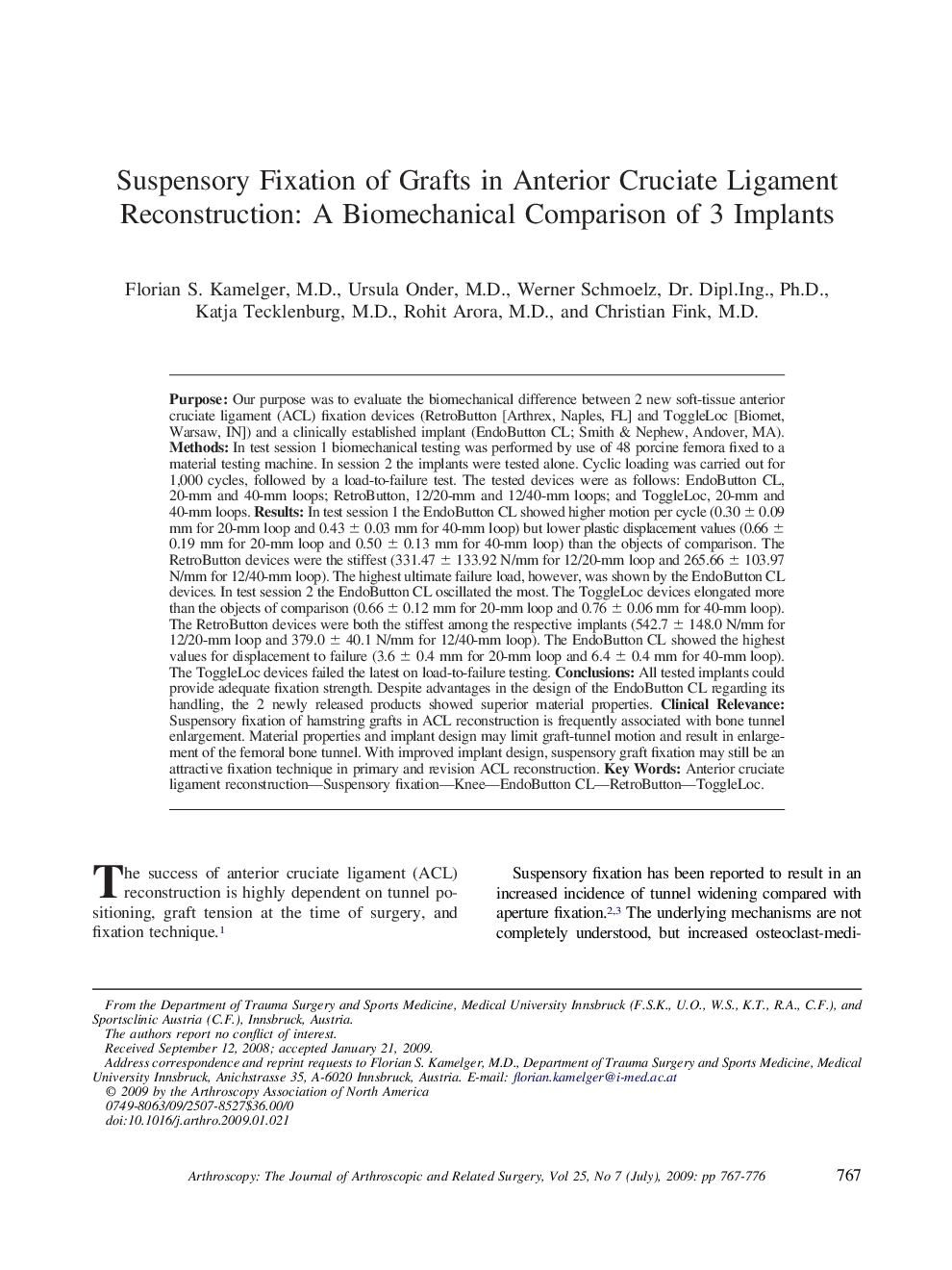| Article ID | Journal | Published Year | Pages | File Type |
|---|---|---|---|---|
| 4045448 | Arthroscopy: The Journal of Arthroscopic & Related Surgery | 2009 | 10 Pages |
PurposeOur purpose was to evaluate the biomechanical difference between 2 new soft-tissue anterior cruciate ligament (ACL) fixation devices (RetroButton [Arthrex, Naples, FL] and ToggleLoc [Biomet, Warsaw, IN]) and a clinically established implant (EndoButton CL; Smith & Nephew, Andover, MA).MethodsIn test session 1 biomechanical testing was performed by use of 48 porcine femora fixed to a material testing machine. In session 2 the implants were tested alone. Cyclic loading was carried out for 1,000 cycles, followed by a load-to-failure test. The tested devices were as follows: EndoButton CL, 20-mm and 40-mm loops; RetroButton, 12/20-mm and 12/40-mm loops; and ToggleLoc, 20-mm and 40-mm loops.ResultsIn test session 1 the EndoButton CL showed higher motion per cycle (0.30 ± 0.09 mm for 20-mm loop and 0.43 ± 0.03 mm for 40-mm loop) but lower plastic displacement values (0.66 ± 0.19 mm for 20-mm loop and 0.50 ± 0.13 mm for 40-mm loop) than the objects of comparison. The RetroButton devices were the stiffest (331.47 ± 133.92 N/mm for 12/20-mm loop and 265.66 ± 103.97 N/mm for 12/40-mm loop). The highest ultimate failure load, however, was shown by the EndoButton CL devices. In test session 2 the EndoButton CL oscillated the most. The ToggleLoc devices elongated more than the objects of comparison (0.66 ± 0.12 mm for 20-mm loop and 0.76 ± 0.06 mm for 40-mm loop). The RetroButton devices were both the stiffest among the respective implants (542.7 ± 148.0 N/mm for 12/20-mm loop and 379.0 ± 40.1 N/mm for 12/40-mm loop). The EndoButton CL showed the highest values for displacement to failure (3.6 ± 0.4 mm for 20-mm loop and 6.4 ± 0.4 mm for 40-mm loop). The ToggleLoc devices failed the latest on load-to-failure testing.ConclusionsAll tested implants could provide adequate fixation strength. Despite advantages in the design of the EndoButton CL regarding its handling, the 2 newly released products showed superior material properties.Clinical RelevanceSuspensory fixation of hamstring grafts in ACL reconstruction is frequently associated with bone tunnel enlargement. Material properties and implant design may limit graft-tunnel motion and result in enlargement of the femoral bone tunnel. With improved implant design, suspensory graft fixation may still be an attractive fixation technique in primary and revision ACL reconstruction.
